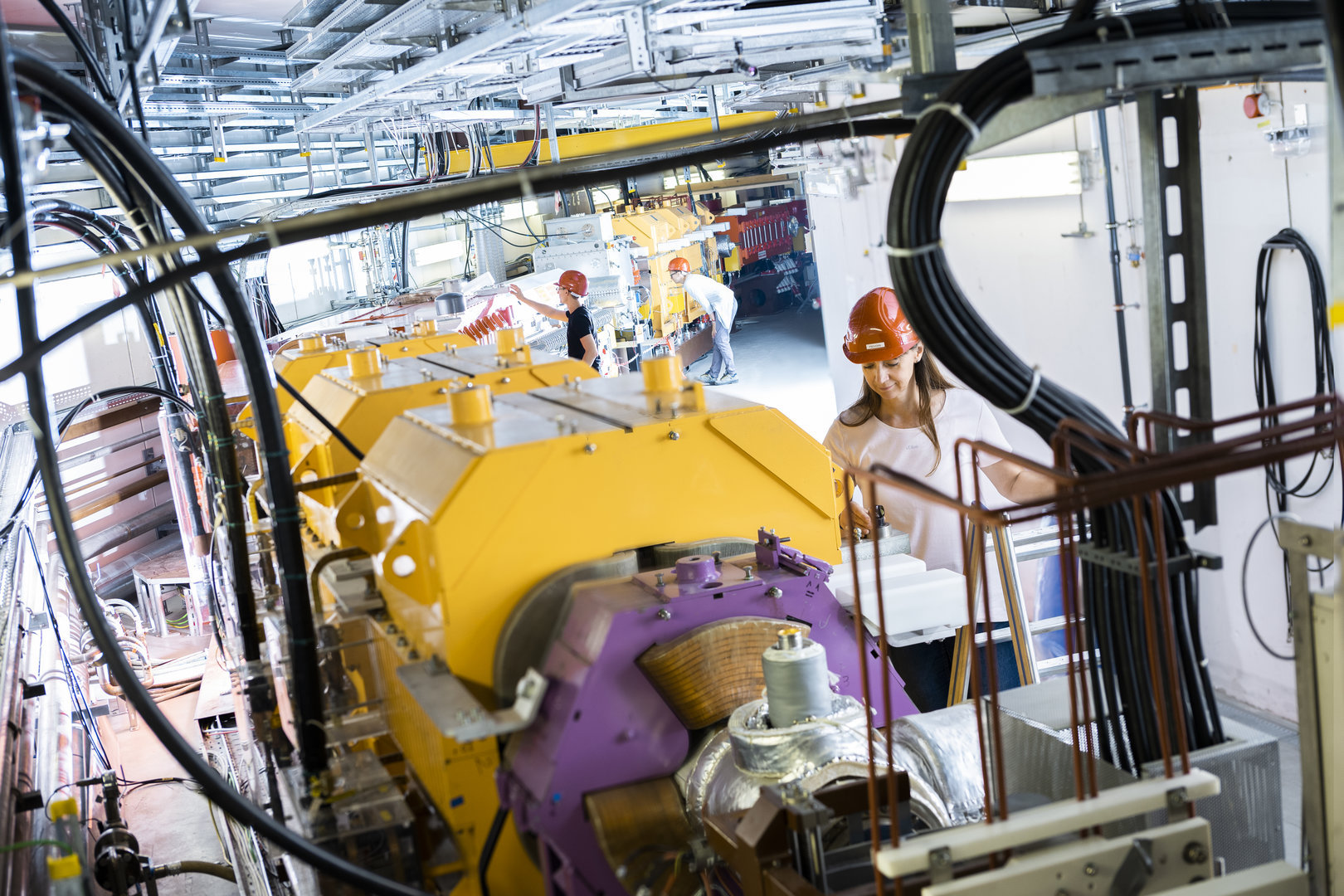Most of the vaccines approved for human use either live attenuated or inactivated viruses (e.g. influenza); newer approaches are based on subcellular components of the infectious agents or on the genetic information encoding for these antigens, such as vector or mRNA vaccines. To develop new vaccines, scientists need methods that inactivate the virus while causing as little damage to its structure as possible — in particular the viral envelope that is the key to the immune response. In past years, the inactivation of viruses for vaccine development has been carried out with conventional gamma radiation. However, the use of high doses of gamma rays inevitably leads to damage of surface structures, which can impair the ability to induce an adaptive immune response. This is where the new GSI and HZI project comes in.
The aim was to irradiate influenza viruses with high-energy heavy ions. Energetic ions are able to inactivate the virus by inducing breaks in the viral RNA with only a few passages in the envelope, at the same time minimizing membrane damage and thus protecting the surface structures. In the experiment at the GSI/FAIR accelerator facilities, an influenza virus was irradiated with the iron isotope Fe-56, which was accelerated at 1 GeV/n at the SIS18 synchrotron. Based on the resulting viruses, HZI produced a flu vaccine inactivated with heavy ions and examined it for its ability to promote the formation of virus-binding and neutralizing antibodies after vaccination.
The researchers found that immunization of mice with the inactivated virus resulted in the stimulation of strong, antigen-specific cellular and humoral immune responses. These promising results suggest that heavy ion beams could be an innovative and effective method for inactivating viruses and developing vaccines that are more effective.
The project was partly funded by the Helmholtz-Förderung aus dem Innovationspool des Forschungsbereichs Materie and was conducted as part of the FAIR Phase 0 experimental period by the GSI Biophysics Department headed by Professor Marco Durante and HZI researchers from the department Vaccinology and Applied Microbiology led by Professor Carlos A. Guzmán. Professor Durante was very pleased about the pioneering results: “It is a very innovative approach and an excellent example of the good and fruitful cooperation within the Helmholtz Association. The findings of this research could form the basis for future vaccine developments and help us to be better prepared for future pandemics.”



